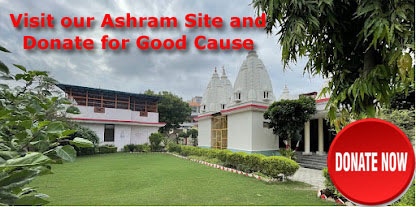beautifully decorated temple. It captures the essence
of the festival with devotees performing rituals,
lighting lamps, and offering prayers to Goddess Durga.
Navratri, one of the most celebrated and auspicious festivals in India, is marked by nine days of devotion, fasting, and worship of the divine feminine. While many follow the well-known rituals, there are several lesser-known practices that add a unique spiritual dimension to this festival. These hidden gems have been passed down through generations, each holding a special significance in different regions and spiritual circles. Here are some Navratri rituals that are not commonly known but carry profound meanings and benefits.
1. Chandika Navarna Mantra Ritual
One of the most potent yet lesser-known rituals of Navratri involves chanting the "Chandika Navarna Mantra," a combination of powerful bija mantras: “Aim Hreem Kleem Chamundaye Vichhe”. This mantra is said to invoke the energy of Goddess Chandika, the fierce form of Durga, for overcoming obstacles and warding off negative energies. This ritual is often performed on Saptami or Ashtami night in complete silence, enhancing its spiritual potency.
2. Ghatsthapana with Rare Seeds
While most people use barley seeds for the Ghatsthapana (Kalash Sthapana) on Day 1, a rare practice involves using medicinal herb seeds like Brahmi and Shankhpushpi. Observing the growth of these herbs is believed to reflect the health and prosperity of the family in the coming year. This unique ritual is performed in some parts of India but is relatively unknown to the masses.
3. Navarna Homam on Ashtami Night
A secretive and powerful fire ritual called Navarna Homam is conducted during the night of Ashtami. It involves offering special herbs like Bilva leaves and Kamal Gatta (lotus seeds) to the sacred fire, invoking the Goddess’s fiercest form, Chamunda. This homam is said to cleanse the home of any negative energies and grant immense spiritual protection to the family.
4. Kumari Puja on Dvitiya (Day 2)
While Kumari Puja (worship of young girls) is commonly done on Ashtami or Navami, there’s a rare tradition of performing it on Dvitiya (Day 2) in honor of Brahmacharini Devi. This ritual is believed to strengthen the resolve and willpower of those who observe it, making it an ideal practice for students or individuals seeking inner strength and determination.
5. Offering 108 Flowers to Invoke All Aspects of the Goddess
On the ninth day, it’s customary to offer 108 different types of flowers to the Goddess, each representing a unique quality. This ritual is believed to invoke the Goddess’s blessings for all 108 human desires, purifying the devotee’s mind and heart. It’s a rare practice that’s typically performed in Tantric circles but has immense spiritual value.
6. Navratri Beej Aahvana: Sowing of Seeds for Prosperity
In certain regions, devotees sow nine different kinds of seeds on the first day of Navratri, representing the nine forms of Durga. The growth of these seedlings is closely observed throughout the nine days and is seen as an omen for prosperity, health, and harmony in the household.
7. Matru-Pitru Tarpan on Shashthi (Day 6)
In many families, Day 6 of Navratri is dedicated to offering prayers and gratitude to ancestors (Matru-Pitru Tarpan). This rare ritual is said to clear ancestral karma and bring peace to departed souls, ensuring their blessings for the success of the ongoing Navratri rituals.
8. Lalita Sahasranama Archana
Reciting the Lalita Sahasranama (1,000 names of Goddess Lalita) is a rare yet powerful practice during Navratri, usually performed on Navami night. Each of the thousand names is accompanied by a flower offering or a specific gesture, which invokes different forms of prosperity and well-being.
9. Lighting of 9 Diyas in 9 Directions
In some parts of India, it is a custom to light nine diyas (lamps) in nine different directions of the house or temple, symbolizing the illumination of all aspects of life. Each diya is said to represent one form of Goddess Durga and is believed to dispel darkness and negativity from every corner of life.
10. Navratri Fasting According to Nakshatras
A lesser-known fasting practice involves choosing days for fasting based on the Nakshatra ruling that day. For example, fasting on a day ruled by Mrigashira Nakshatra is said to be ideal for strengthening willpower, while a day ruled by Rohini Nakshatra enhances prosperity and happiness.
Conclusion
These rare rituals offer a unique perspective on Navratri, adding depth and diversity to the festival's celebrations. Exploring these practices not only enriches one’s spiritual experience but also revives the hidden wisdom of ancient traditions. Whether you're seeking prosperity, protection, or spiritual growth, incorporating these lesser-known rituals can amplify the blessings of the divine feminine in your life.

















































No comments:
Post a Comment